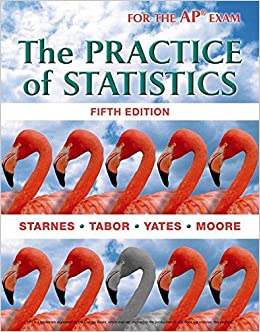A 10-question multiple-choice exam offers 5 choices for each question. Jason just guesses the answers, so he
Question:
A 10-question multiple-choice exam offers 5 choices for each question. Jason just guesses the answers, so he has probability 1/5 of getting any one answer correct. You want to perform a simulation to determine the number of correct answers that Jason gets. One correct way to use a table of random digits to do this is the following:
(a) One digit from the random digit table simulates one answer, with 5 = right and all other digits = wrong.
Ten digits from the table simulate 10 answers.
(b) One digit from the random digit table simulates one answer, with 0 or 1 = right and all other digits = wrong.
Ten digits from the table simulate 10 answers.
(c) One digit from the random digit table simulates one answer, with odd = right and even = wrong.
Ten digits from the table simulate 10 answers.
(d) One digit from the random digit table simulates one answer, with 0 or 1 = right and all other digits = wrong, ignoring repeats. Ten digits from the table simulate 10 answers.
(e) Two digits from the random digit table simulate one answer, with 00 to 20 = right and 21 to 99 =
wrong. Ten pairs of digits from the table simulate 10 answers.
Step by Step Answer:






